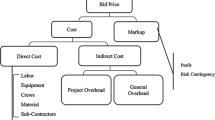Abstract
This paper considers the actual task of planning the rational development of sports infrastructure with limited resources. The development of a mathematical model for the evaluation of sports infrastructure projects and the schedule for their implementation are carried out. To evaluate projects, it is proposed to use methods of multicriteria decision analysis based on fuzzy preference areas. It is difficult to search for the optimal parameters of the proposed model due to the presence of binary variables that make the problem NP-hard. To find a solution close to the optimal one, a machine learning model with reinforcement is proposed. Software is developed that allows both ranking projects and determining the schedule for their implementation, taking into account the available resources and needs. The algorithmic and software solution based on a machine learning model with reinforcement is invariant with respect to the subject area and can also be used in other combinatorial optimization problems. Computational experiments are carried out for the proposed solution on the example of the problem of choosing regions for the construction of basketball courts.

Similar content being viewed by others
REFERENCES
A. V. Lotov and I. I. Pospelova, Multicriteria Decision Making Problems (MAKS Press, Moscow, 2008) [in Russian].
A. V. Dutov, V. A. Nesterov, V. A. Sudakov, and K. I. Sypalo, “Fuzzy preference domains and their use for selecting an electronic flight bag for flight crews,” J. Comput. Syst. Sci. Int. 57 (2), 230–238 (2018). https://doi.org/10.1134/S1064230718020065
G. N. Levchenko, O. S. Zaytsev, N. A. Isakov, V. A. Cherepanov, and A. V. Gartsev, “Features of the specifics of forming the availability of mass sports services,” Aktual. Issled., No. 15 (18), 85–91 (2020).
R. V. Fayzullin and T. N. Ivanova, “Method for calculating economic and social effectiveness of sports objects,” Probl. Ekon. Menedzhmenta, No. 11 (51), 83–88 (2015).
C. Murillo, J. M. Raya, and J. Bosch, “The economic importance of the sports sector and the economic impact of sporting events,” in Sports (and) Economics, Ed. by J. Garcia, FUNCAS Social and Economic Studies, Vol. 7 (Funcas, Madrid, 2019), pp. 425–446.
E. Jelešković, M. Talović, I. Rađo, I. Mahmutović, H. Alić, A. Mašala, Š. Ormanović, A. Ćirić, D. Đedović, and K. Dizdarević, “Analysis of organizational structure and financial aspects of successful European clubs,” Sport Sci.: Int. Sci. J. Kinesiol. 9 (1), 41–45 (2016).
R. R. Zaripova and M. R. Sikhimbaev, “Evaluation of a real estate object by taking into account the social efficiency of its work (with the example of a sports facility),” Mezhdunar. Stud. Nauchn, Vestn., No. 5 (2017).
T. R. Solomakhina and E. A. Bobrovskii, “Assessment of the impact of the provision of sports infrastructure on the ability of the population to go in for sports,” Mezhdunar. Zh. Prikl. Fundam. Issled., No. 3-1, 133–137 (2017).
E. R. Akhmetshina, O. A. Ignatjeva, and I. M. Ablaev, “Tendencies and prospects of public-private partnership development in the field of physical culture and sport,” Eur. Res. Studies J. XX (2A), 422–430 (2017). https://doi.org/10.35808/ersj/650
M. Gordienko, K. Ekimova, N. Glubokova, and E. Shuvalova, “Fiscal and investment indicators for evaluating professional sports facilities,” SHS Web Conf. 89, 04002 (2020). https://doi.org/10.1051/shsconf/20208904002
O. V. Mkrtychev and V. B. Dorozhinskiy, “The analysis of the constructive solutions and the results of the structural analyses of the sports facilities,” Stroit.: Nauka Obraz. 8 (2 (28)), 16–27 (2018). https://doi.org/10.22227/2305-5502.2018.2.2
G. N. Levchenko, O. S. Zaytsev, and A. V. Gartsev, “Algorithm for implementing project financing in the field of sports,” Aktual. Issled., No. 15 (18), 97–101 (2020).
N. K. Zavriev, I. G. Pospelov, and L. Ya. Pospelova, “Investigation of economy mathematical models with system ECOMOD tools,” Mat. Model. 15 (8), 57–74 (2003).
B. N. Chetverushkin and V. A. Sudakov, “Factor modeling for innovative enterprises,” Math. Models Comput. Simul. 12 (6), 907–914 (2020). https://doi.org/10.1134/S2070048220060058
H. Dai, E. B. Khalil, Y. Zhang, B. Dilkina, and L. Song, “Learning combinatorial optimization algorithms over graphs,” in Proc. 31st International Conference on Neural Information Processing Systems (NIPS 2017) (Curran Associates, Red Hook, NY, 2017), pp. 6351–6361.
J. Schulman, F. Wolski, P. Dhariwal, A. Radford, and O. Klimov, “Proximal policy optimization algorithms,” (2017). https://doi.org/10.48550/arXiv.1707.06347
Funding
This study was carried out with the financial support of the Plekhanov Russian University of Economics.
Author information
Authors and Affiliations
Corresponding author
Ethics declarations
The authors declare that they have no conflicts of interest.
Rights and permissions
About this article
Cite this article
Sudakov, V.A., Belozerov, I.A. & Prudkova, E.S. Reinforcement Machine Learning Model for Sports Infrastructure Development Planning. Math Models Comput Simul 15, 608–614 (2023). https://doi.org/10.1134/S2070048223040178
Received:
Revised:
Accepted:
Published:
Issue Date:
DOI: https://doi.org/10.1134/S2070048223040178




